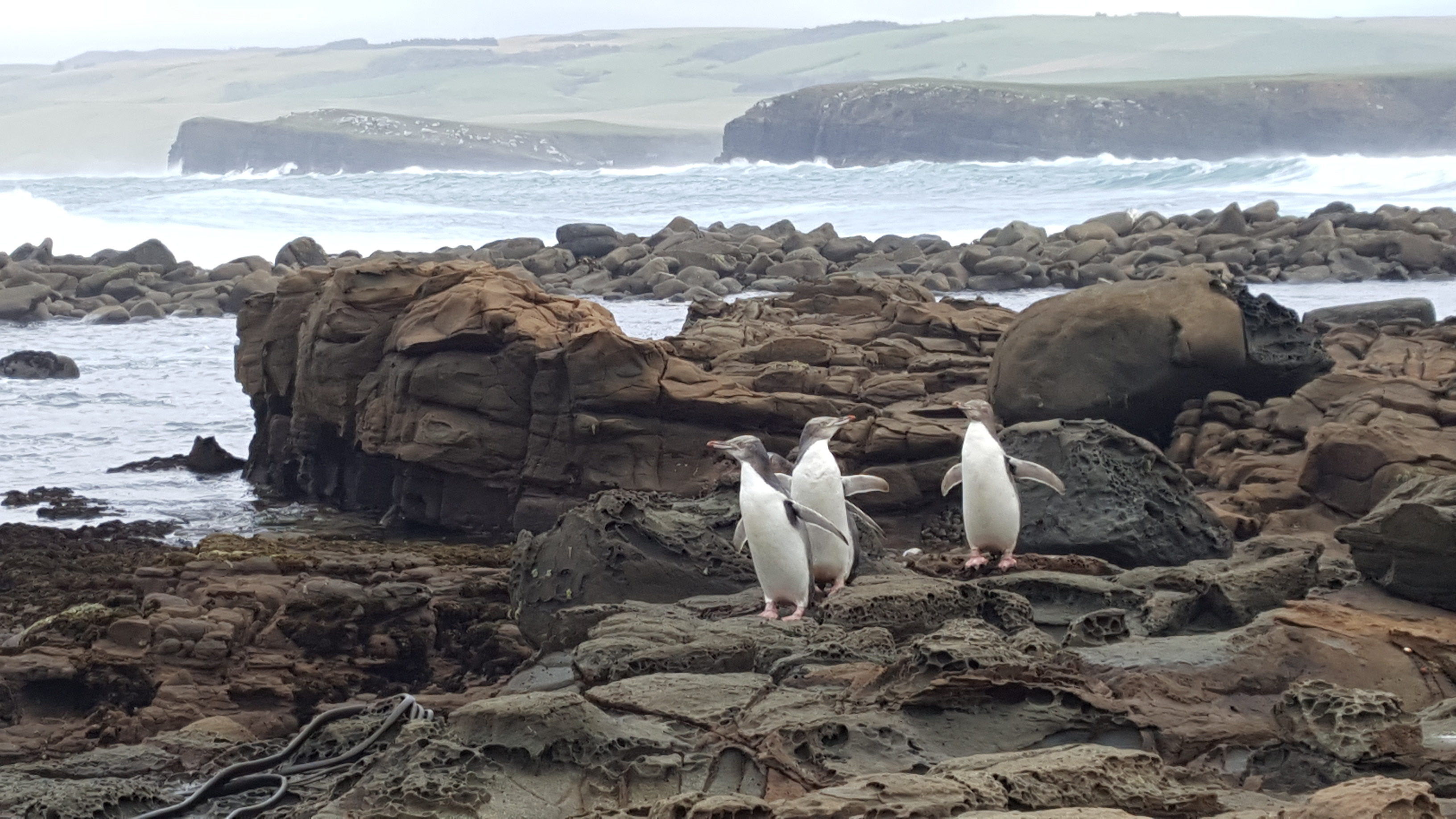
Yellow-eyed penguin nest numbers down – Media Release
Recent yellow-eyed penguin/hoiho nest counts on mainland New Zealand indicate a continued decline in numbers in some areas for this rare taonga species says Department of Conservation (DOC) Threatened Species Ambassador Nicola Toki.
DOC carries out monitoring, research, and intensive management for yellow-eyed penguins alongside Treaty Partner Ngāi Tahu, key programme partner the Yellow-eyed Penguin Trust, University of Otago, important local associates such as Penguin Place and Penguin Rescue, community groups and volunteers.
“Our work with yellow-eyed penguins stretches from sites on Banks Peninsula, down to Stewart Island/Rakiura, Codfish Island/Whenua Hou and the subantarctic islands,” says Ms Toki.
“While nest numbers are similar to last year from Dunedin northwards, there are declines further south. The estimate for the total southern east coast based on current counts is around 250 nests, down from 261 a year ago. This number is of concern given historically there were between 400-600 breeding pairs and the current number is the lowest for 27 years.”
The decline is steepest on Codfish Island/Whenua Hou off the coast of Stewart Island/Rakiura where only 14 hoiho nests were found, down from 24 the previous year. Nest counts of yellow-eyed penguins on Whenua Hou have been steadily declining with a sharp decrease in the number of nests over the past couple of years. As Whenua Hou is a predator-free island with limited human access, terrestrial influences are unlikely to be the cause.
Yellow-eyed Penguin Trust General Manager Sue Murray says “the Trust has huge concerns for the future of hoiho on Whenua Hou given their rapid decline. Our focus must be the marine environment wherehoiho spend at least half of their life as it is unlikely that terrestrial impacts are a major factor here. The Trust, DOC and Ngāi Tahu are working with urgency to address this situation.”
Yellow-eyed penguins face wide-ranging threats from climate change to disease. Avian diphtheria remains a serious ongoing issue for the birds and can affect a large proportion of newly-hatched chicks.
More research is needed on the factors affecting the population of hoiho, particularly on Whenua Hou, and DOC is working with Ngāi Tahu and the Yellow-eyed Penguin Trust to develop a new recovery plan and strategy. This will refocus strategic priorities for the conservation of hoiho, incorporate Ngāi Tahu perspectives to provide guidance for management, update management coordination and enhance conservation efforts.
Priorities in responding to this decline in hoiho numbers include:
- Ensuring the basic needs in terms of habitat and terrestrial predator control are maintained at priority mainland sites. This includes working with site managers to see that trapping practise follows current best practise
- Monitoring priority habitats to check the health of hoiho during the breeding season.
- Supporting the work of MPI to improve practises for the inshore set net fishery through observer coverage.
- Responding to unwell or injured birds
- Supporting research to investigate foraging of hoiho in the marine environment and other relevant research projects.
“We also ask that people help us to protect these vulnerable birds this summer by giving them plenty of space and quiet, respecting barriers and encouraging the same behaviour from others,” says Ms Toki.
“Please call DOC’s Hotline on 0800 DOC HOT (0800 362 468) if you come across yellow-eyed penguins along the Otago and Southland coastline and are concerned about their condition, describing as accurately as possible when and where the bird was found”
Background
Yellow-eyed penguins are thought to be one of the world’s rarest penguin species and are the most at risk in New Zealand. The 2016 Threat Classification for Birds assessed hoiho to meet the criteria of Nationally Endangered compared to the previous assessment of Nationally Vulnerable.
The total population of hoiho was last estimated at 1600 to 1800 breeding pairs, but following the decline on the mainland, is now likely to be less than that.
It is thought that 60% of the total estimated hoiho population is found on Auckland Islands and Campbell Island. These are two uninhabited islands, hundreds of kilometres south of Bluff. Both islands are protected nature reserves managed by DOC. 12% of the total hoiho population is found on Stewart Island and 28% in the South Island – primarily on a 360km stretch of Otago/Southland coast between the Waitaki River andWaipapa Point in the Catlins. There are a handful of hoiho living on Banks Peninsula.
Preliminary estimates for minimum number of breeding pairs
- North Otago 50 nests at Moeraki, a similar number to last year.
- Otago Peninsula has estimate of 90 nests and is trending slightly down on last year. Papanui Beach and Kumokumowhero (Penguin Beach) are the large sites still to be searched and could still change this preliminary estimate considerably.
- Catlins show a decline with the current estimate of 108, 120 nests estimated last year.
- The Banks Peninsula Conservation Trust have found 5 nests on Banks Peninsula, though 1 has already been abandoned. Four were found last year.
- Whenua Hou (Codfish Island) 14 nests were found (24 last year).
Viewing hoiho
Simple guidelines to minimise impact and stress on penguins.
- For the best views, take binoculars, instead of approaching or following birds.
- Keep your distance – 50 metres away is best.
- Talk quietly and move slowly.
- Hide so they can’t see you (squat down low if you can’t hide, so you are not as visible).
- Keep to formed tracks and don’t cross fence lines.
- Keep your dog away from penguins – they may kill them.
Contact
DOC:
Threatened Species Ambassador, Nicola Toki, 027 403 6107
Communications Advisor, Lizzy Sutcliffe, 027 886 3507
Yellow-eyed Penguin Trust:
General Manager, Sue Murray, 021 488 285
Conservation Science Advisor, Trudi Webster, phone 021 264 4432


